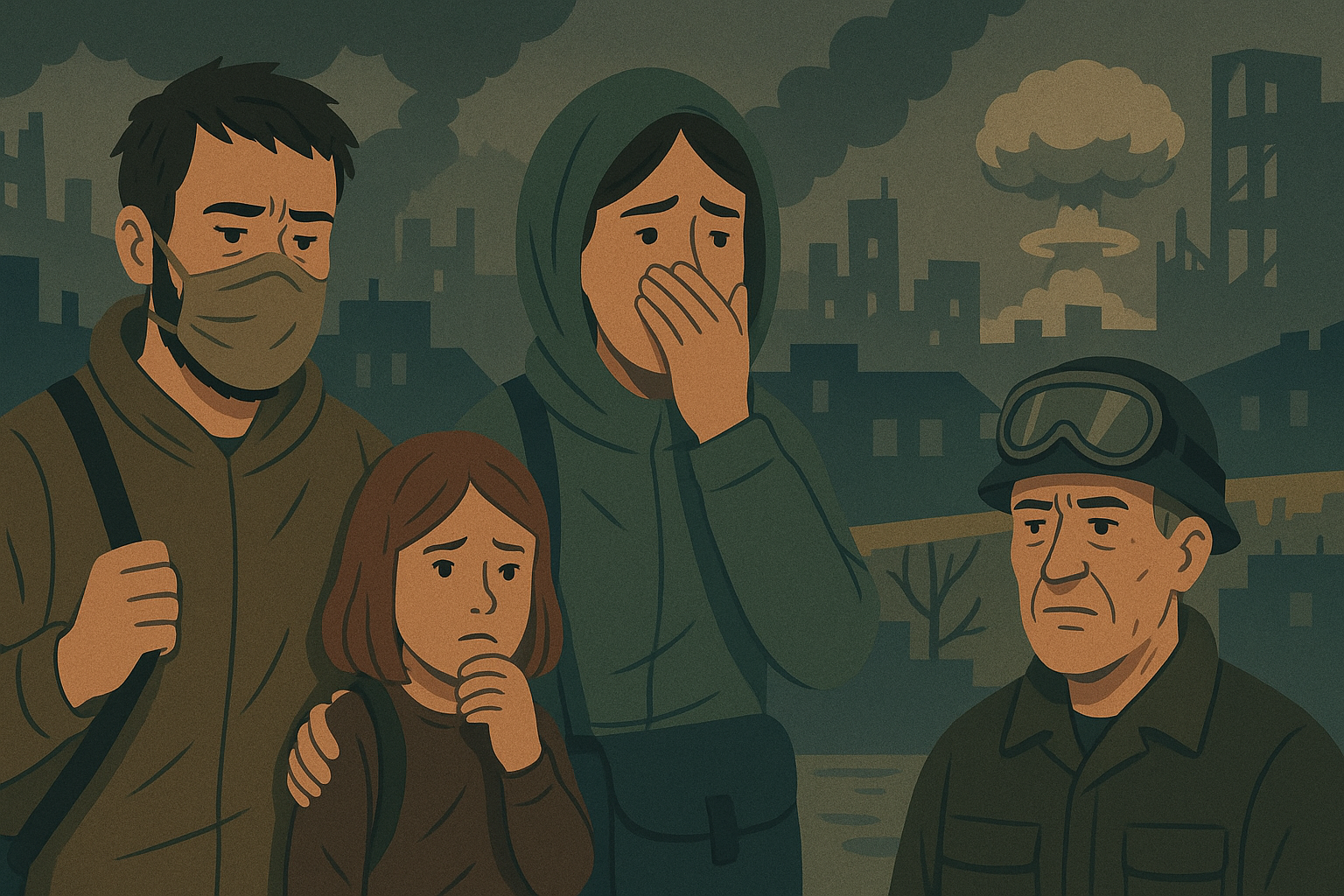Survivors’ Stories: Real Accounts from People Who Lived Through Nuclear Disaster

Introduction
What is it really like to survive a nuclear disaster?
Movies and TV often show nuclear events as instant apocalypse, but the truth is far more human, complicated, and hopeful.
Across history—from Hiroshima and Nagasaki, to Chernobyl, Fukushima, and even nuclear bomb tests—real people have endured, adapted, and rebuilt their lives after the unthinkable.
This in-depth article explores first-hand stories from survivors, highlighting what they saw, felt, and learned—plus essential lessons for anyone preparing for a worst-case scenario in today’s uncertain world.
The Day Everything Changed: Moments of Impact
Hiroshima, 1945: “The World Became White”
Keiji Nakazawa was seven when the atomic bomb hit Hiroshima.
He described an instant white flash—“as if I had stared into the sun”—then total darkness, followed by an intense heat wave and chaos.
He lost much of his family but survived by sheltering behind a stone wall.
His words:
“I thought, ‘Am I dead? Am I alive?’ It took days before I found other survivors. The world was ashes and silence.”
Chernobyl, 1986: “Invisible Danger, Everyday Heroes”
Lyudmilla Ignatenko, wife of a firefighter called to the burning reactor, was warned not to touch her husband due to radiation burns, but she stayed by his side until his death.
Many survivors, like Lyudmilla, were not given full information—leading to confusion, despair, and sometimes heroism.
Thousands of “liquidators” risked their lives to prevent a wider catastrophe.
“We didn’t know what radiation was, but we saw friends falling ill… You cannot see or smell it. But it changes everything.”
Fukushima, 2011: “Evacuate, Then Start Again”
Yuko Endo, a farmer from the Fukushima exclusion zone, lost her land and home in the mass evacuation.
She recalls:
“The hardest thing was not knowing if we could return, or if our children would be safe. The community was split. Trust in authority was broken. But we still help each other—those bonds are what keep us going.”
Psychological Survival: The Human Cost
Fear and uncertainty were nearly universal themes among survivors:
- Fear of invisible radiation, contamination, and disease
- Guilt for surviving when others did not (“survivor’s guilt”)
- Isolation—disaster often split families and communities
- Difficulty trusting official news or returning to “normal life”
But also:
- Remarkable resilience and adaptation
- Deep community bonds formed in crisis
- Many survivors become activists, educators, or caregivers
What Actually Worked: Lessons from the Survivors
1. Immediate Shelter Saved Lives
In both Hiroshima and Chernobyl, those who took cover—behind walls, in basements, even ditches—had a far higher survival rate.
2. Community Was Everything
Sharing food, water, and hope was just as important as shelter.
Neighbors who organized quickly (group cooking, information-sharing, group sheltering) coped much better.
3. Psychological Preparation Mattered
Survivors with a “next step” mindset—who focused on small, actionable tasks—had better mental health.
Making lists, helping others, and staying busy all helped fight despair.
4. Trusting Official Instructions (With Caution)
While following shelter/evacuation orders often saved lives, survivors stress the importance of verifying information and being ready to act without waiting for official word, if danger is obvious.
Modern WW3 & Nuclear Survival: What Can We Learn?
| Lesson | Survivor Quote |
|---|---|
| Take shelter immediately | “Hesitation killed more people than radiation.” |
| Avoid contaminated food/water | “After Chernobyl, wild berries and milk were unsafe.” |
| Prepare a go-bag | “I lost everything. I wish I’d packed documents, medicine, family photos.” |
| Focus on people, not possessions | “We could rebuild a house, but not lost friends.” |
| Look after mental health | “The nightmares lasted years. Talking helps.” |
Mini Case Study: The Marshall Islands
The Marshallese people were exposed to fallout from US nuclear tests in the 1950s.
Many survived by:
- Staying indoors during fallout
- Filtering water and avoiding contaminated food
- Relocating to safer islands, sometimes at great personal loss
But generations later, they still face health and environmental impacts—reminding us that nuclear disaster’s effects can last lifetimes.
From Survivor to Activist: Giving Back
- Setsuko Thurlow (Hiroshima): Became a global advocate for nuclear disarmament.
- Svetlana Alexievich (Chernobyl): Nobel Prize-winning author documenting voices of disaster.
- Naoto Matsumura (Fukushima): The “last man of Fukushima,” refused to evacuate, cares for abandoned animals.
These individuals show that meaning and hope can arise even after disaster, and their stories inspire practical preparedness today.
Key Takeaways: How to Apply Their Lessons Now
| Action | Why It Matters |
|---|---|
| Know where to shelter | Reduces exposure during the critical first hours |
| Pack an emergency kit | Important documents, medicine, water, radio |
| Stay informed—cautiously | Verify info from trusted sources |
| Build community ties | Share resources, support mental health |
| Focus on resilience | Survival is physical and psychological |
Frequently Asked Questions
Are nuclear disasters survivable?
Yes—most people who are not in the immediate blast or exposure zone survive, and many return to normal life over time.
How do survivors cope mentally?
Routine, staying connected, helping others, and seeking counseling are key. Many find new purpose as educators or advocates.
Is it worth preparing for something so rare?
Absolutely. Basic preparedness (shelter, supplies, community) helps in all crises, not just nuclear ones.
Conclusion
Real survivor stories show that hope, resilience, and preparation matter as much as luck.
If you ever face disaster, remember these lessons—take shelter fast, connect with others, and focus on the next step, not the whole journey.
The human spirit is stronger than you think.
For more real-life stories and practical preparedness guides, subscribe to our blog or share your own survival tips in the comments below!